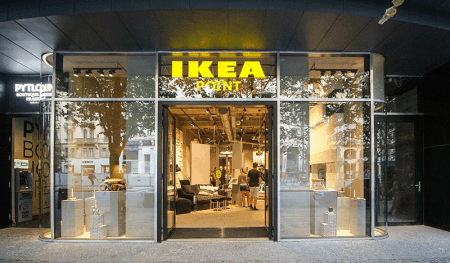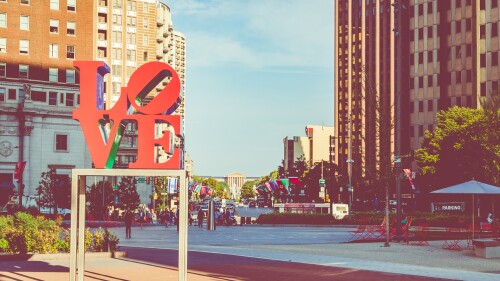Even before the pandemic, the retail sector was experiencing the rise of e-commerce and changing preferences in how people shop, as retailers began exploring pop-ups and other kinds of experiential strategies. At the same time, traditional malls were continuing to struggle, especially older, lower-tier properties. Now, three years after COVID-19 upended retail and led to closings and companies rethinking how best to attract shoppers, the latest trend taking hold revolves around a more curated approach. Companies including Macy’s, Nordstrom, Kohl’s, and IKEA are rolling out small-format stores around the country, often in suburban areas, as they try other ways to connect with their customers.
Era of experimentation
Big-name retailers may have made headlines recently in announcing plans for more of these small concept stores, but the idea is something the industry has been exploring for more than a decade. Wal-Mart experimented with smaller-format stores in 2011, with scaled-down Wal-Mart Express locations that ranged between 12,000 and 15,000 square feet (between 1,115 and 1,395 sq m) in size. More than 100 of them opened across the U.S., but by 2016, the retailer decided to shut them down. Target began exploring stores about a fourth the size of its normal locations in urban areas in 2012 and opened its first concept store near the University of Minnesota in 2014.
By 2016, the idea garnered even more attention when Amazon unveiled its Amazon Go store. The concept was announced as a “new kind of corner store” where shoppers could grab a coffee, snacks, a quick lunch, or return an Amazon package.
Amazon executives envisioned the smaller stores—ranging in size from 450 square feet (42 sq m) to 2,700 square feet (250 sq m)—opening in office lobbies and in hospitals. What set these stores apart, aside from their diminutive size, was that they required no waiting in line and no exchange of money. As shoppers entered the store, they scanned their Amazon Go app at a gate, and whatever they left with would be charged to their account.
Although the Amazon stores opened in several markets around the country—including New York, Seattle, and San Francisco—company leaders announced earlier this year that they were closing many of the locations, as they looked to cut costs and shrink their real estate footprint.
Other early adopters of the small-store concept included IKEA, which opened a small concept store in San Francisco in August 2023 to long lines, and Best Buy, which opened its first small-format store in Monroe, North Carolina, a town in the Charlotte metropolitan area, last year. Every retailer has its own particular vision and reasons behind the decision to build a smaller-sized store, but on its face, small concept stores offer a lot of positives.
“A smaller concept store may be easier to gear toward local tastes and culture, which can help create stronger connections with new and existing customers,” says Stephanie Cegielski, vice president of research and public relations at the International Council of Shopping Centers.
Compared with a large retail format, small-format stores typically require smaller buildouts and operating costs. Smaller layouts also offer more flexibility for a retailer that allows placement of more stores in growing secondary and tertiary markets.
Many of the retailers opening these kinds of concept stores are also offering return services for items bought online, as well as fulfilling e-commerce orders for in-store pickup. Aside from the size of the stores, the location is a key part of the concept, as well.
Amid efforts to reach their customer base, many retailers are choosing to open these small-format stores in suburban areas, given the higher percentage of Americans working from home since the pandemic. Another driver of the push for more suburban locations is more dense, urban areas’ often having zoning laws that prevent a retailer from opening up a more traditionally sized store. “A smaller format store may offer an accessible point of entry,” Cegielski says.
In this post-pandemic time, when the industry is still experiencing a normalization of shopping behaviors exacerbated by inflation, retailers must think differently about the rules of retail. “Scale still matters, but it’s about being much more specific about building to local scale and geographic density, and understanding what customers are looking for,” says Nate Shenck, managing director and senior partner at Boston Consulting Group, who leads the company’s North American retail team. “Almost all retailers are trying to find the next levers for growth, and format experimentation is one of those.”
Curating the customer experience
Over the last few months, some major retailers have announced plans to open or expand their footprint of small-format stores. Most recently, Macy’s announced, in early October, plans to ramp up expansion of its small-format stores, with 30 new locations nationwide to open, starting this year.
Nordstrom’s small-format strategy, “Closer to You,” first launched in 2020, in five major U.S. markets. It focuses on bringing Nordstrom Rack stores closer to its customers and having a more curated selection of products. The stores offer order pick-up, returns, and other services, such as tailors at every location and personal stylists. The rollout of these stores has continued to expand. This summer, Nordstrom executives announced plans to open 23 Nordstrom Rack stores, in mostly suburban markets, across the country, between fall 2023 and spring 2025. The locations will range in size from 23,000 square feet (2,100 sq m) to 36,000 square feet (3,344 sq m).
When Macy’s announced its small-format store openings last fall, company leaders said the push toward expanding its small-format stores—and its Bloomingdale’s brand, especially—focused on how customers experience a retail setting. “It’s all about curation of product and the delivery of a better experience for the customer,” incoming Macy’s CEO Tony Spring told CNBC’s Jim Cramer.
The company is targeting locations in off-mall shopping centers for these new concept stores, which also include Bloomie’s, a small-format offshoot of Bloomingdale’s. Those stores are about one-fifth the size of the traditional, large-format department store brand and put a high priority on customer service. Bloomie’s fitting rooms, for instance, were designed with comfort in mind. The spaces are larger and more inviting, with designated lounge areas where customers are encouraged to take selfies.
“Our small-format stores are efficient to operate, provide the customer with a shopping alternative within our omnichannel ecosystem, and present a unique opportunity to target high-traffic shopping centers,” says Macy’s COO & CFO Adrian Mitchell in the company’s announcement.
IKEA has also made a foray into small-format stores. The company stated last fall that it had opened more than 70 new IKEA locations by late 2023, most of which were small-format stores and the company’s Plan and Order locations. In 2021, IKEA opened a small-format store in the Queens borough of New York City that was about half the size of an average IKEA outpost.
The store offered a range of items that customers could purchase and take home, as well as the ability to order other products and have them delivered to those homes. The store also offered appointments with staff members who would help a customer with choosing products for their home.
Before that store opening, IKEA opened a 17,350-square-foot (1,612 sq m) planning studio in Manhattan’s Upper East Side. Both the Queens and the Manhattan locations closed in 2022, but IKEA has focused on opening more of these kinds of stores in markets around the world, including its latest small-format store in Copenhagen, which company leaders touted as being more accessible for the many cyclists who call that city home. IKEA also opened a new small-format store in San Francisco in August 2023.
Downsizing stores can also be a boon to retailers’ sustainability efforts. By opening a smaller store, they’re already on the right track to decarbonization. A smaller square-footage footprint means a smaller carbon footprint. Plus, whereas a typical store format might include several escalators and elevators running for more than 12 hours a day, a small-format store could avoid them altogether.
Heating and cooling a space with more than 100,000 square feet (9,290 sq m) uses considerably more energy than a store about a third or less that size. Additionally, smaller retail footprints potentially have local environmental benefits on such things as stormwater runoff.
Retailers are increasingly looking at small-format stores to stay competitive and better connect to their customer base, but the shift is also being driven by the ongoing labor shortage that has affected industries across the spectrum. Not only are many retailers finding it hard to staff stores, even when they are able to fill positions, but the cost of labor and operating costs has gotten very high, due to inflation.
“I think it’s a combination of a lot of things … driving up costs,” says Richard Lake, founding partner of the Washington, D.C.–based firm Roadside Development. Lake points to how many employees it takes to run large-format stores with 150,000 square feet (14,000 sq m) or more, the amount of merchandise that is needed to stock such a store, and public safety considerations including the number of exits and entrances. “The marketplace has gotten to be very fraught,” Lake says. “Retailers, just like in the office sector, are looking to shrink their footprint and cut costs.”







